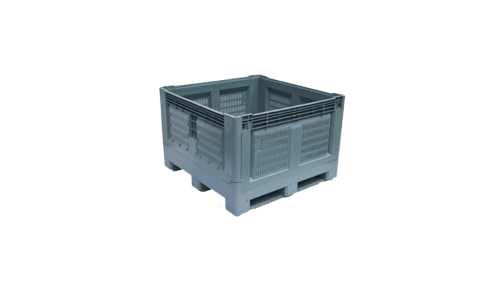

Within the food supply chain, food safety is always a top concern, particularly as it relates to fruit and vegetables. Food-borne illnesses affect an estimated two to four million Australians each year, according to the Department of Health. While these illnesses come from food that may have been contaminated in a number of ways, there is at least one way to ensure your food transportation practises don’t contribute: By ditching the wooden pallets and replacing them with durable, environmentally friendly plastic pallets.
Below are 5 of the best reasons food supply chains are choosing plastic over wood for their pallets.
1. Plastic doesn’t absorb pathogens
Because our plastic pallets have strong, non-porous surfaces, they cannot absorb dangerous pathogens. Wooden pallets are risky in that they can, and often do, absorb harmful types of bacteria. One of the more serious pathogens that can be found in wooden crates is Listeria. Humans ingesting food or drink with high levels of this bacteria can contract Listeriosis, which can cause fever, muscle aches, loss of balance, diarrhea and in some cases convulsions. Listeriosis is particularly dangerous for pregnant women. Wooden pallets can also carry salmonella and E.coli, the nastiness of which are both well documented.
2. Plastic is immune to insect contamination
Due to the moulding process, our plastic pallets are extremely tough and as such cannot be penetrated by insects. Regardless of the type of food products being shipped, there is a risk of insect contamination. The FDA released a handbook in 2015 outlining common defects which included such horrors as maggots in tomatoes, fly eggs in raisins and assorted insect fragments in peanuts (and these were only the insect-related contaminants). Now, this shouldn’t suggest that all of these contaminants arrived during shipment as a result of wooden pallets, but it does give you an idea of the sort of risks involved in transporting food.


3. No fumigation required for plastic pallets
In order to address the issue of insect infestation, wooden pallets are often fumigated. This often happens using methyl bromide, a particularly dangerous chemical even in small amounts. Methyl bromide is not only horrible for the environment due its depletion of the atmospheric ozone layer, but is also very bad for humans. This substance can be toxic if inhaled in amounts as little as 35 parts per million. Because of the characteristics of Eco Pallets Australia’s plastic shipping products, they are extremely easy to clean and never require fumigation as a means to rid them of bugs. While this type of fumigation is likely to be phased out in the coming years, it remains a relevant threat to both your products and your customer.
4. Plastic is easy to sanitise
One the greatest characteristics of plastic shipping pallets is that they are so easy to clean. Plastic pallets can often be thoroughly cleaned with good old-fashioned elbow grease, or otherwise steam cleaned. The type of sanitisation required often depends on what’s been shipped on them. In the most risky of situations or those dictated by international biosecurity restrictions, we recommend a high pressure clean. It’s not just sanitisation that’s easy with plastic pallets, but also the physical act of cleaning. Our pallets are designed so that your cleaning materials can easily reach every exposed surface, meaning there’s not a single harmful molecule remaining after the sanitation process.
5. No fasteners, no protruding nails in plastic pallets
Wooden pallets come in a number of sizes and strengths, and while they are always built to specified guidelines, there’s no universal standard for the types and amount of fasteners used in their construction. After a few heavy uses wooden pallets can often be structurally compromised, having nails, screws, staples or bolts protruding from the joints in a fashion that could damage the cargo. Even worse, if the pallet in question contains contaminants, a stray nail could help spread it from the crate into your food.
There are a number of risks involved in using wooden pallets, and when it comes to food supply, you can never be too careful.
From Queensland Australia Department of Health on November, 2021:
In Australia: There are at least 4.1 million cases of gastro each year. On average, there are more than 230,000 cases of Campylobacter and 55,000 cases of Salmonella each year. The total annual cost to society for foodborne illness is $1.249 billion.
Rather than taking the risk of something going awry, it’s far easier to prevent potential disaster by using plastic pallets. To find out more about plastic shipping pallets and sustainable shipping practices, get in contact with Eco Pallets today.










Comments are closed.